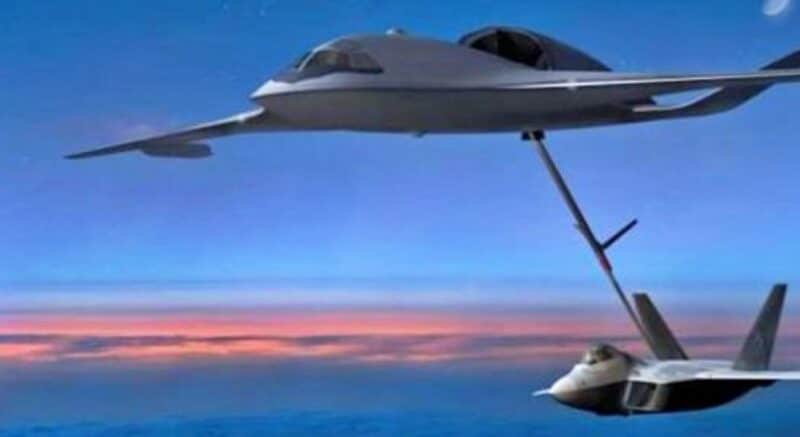In recent years, the race has been launched between the major aeronautical powers to develop a new generation fighter. Whether it is the NGAD of the US Air Force, the NGAD F/A-XX of the US Navy, the Franco-Spanish-German FCAS, the Italian-British-Japanese FCAS, or the still secret Chinese program , these 6th generation devices will bring new capabilities creating a clean break with previous generations, much more than those supposed to define the dubious 5th generation. Through their capabilities for cooperative engagement, drone control, and performance unparalleled with current aircraft, these fighters will allow air forces to retain sufficient action and maneuver capabilities for decades to come. exercise of air power, including in non-permissive environments saturated with anti-aircraft systems, also new generation.
However, as the war in Ukraine demonstrated, air power can only be fully exercised if combat aircraft, no matter how efficient, can rely on a fleet of support aircraft offering many critical services. , such as advanced air warning (the famous Awacs), electronic intelligence or even the essential tanker aircraft. It is also likely that the difficulties encountered by the Russian air forces in Ukraine, despite a fighter fleet much superior in quantity and quality to that of their adversary, is partly due to the low number of support implemented, Russia only having about ten operational Beriev A-50 awacs, and about fifteen Il-78 tanker planes, while few fighters and even fewer pilots are actually qualified for the delicate in-flight refueling procedure.

The vulnerability of these supporting devices, against long-range air-to-air missiles like the Russian R37M or the Chinese PL-15, but also to long-range surface-to-air systems such as the Russian S-400 and the Chinese HHQ-9, is a major concern of the US Air Force which, with 550 tanker aircraft, 40 Awacs and 170 electronic intelligence aircraft, has more than 75% of the aircraft of this type on the planet. Answers have been made, such as the integration of electronic warfare suite and decoy launchers into these devices, and others are in development, such as the SHIELD program which plans to equip these heavy, imposing and therefore not very maneuverable devices with a laser hard-kill system to destroy the missiles that would engage them. However, if these systems allow and will allow to increase the survivability of the aircraft, they do not allow them, however, to carry out discreet actions, nor to approach the line of engagement, two major handicaps for the conduct of operations. military in the future. For this, and to take full advantage of the capabilities offered by 6th generation fighters, a new generation of support aircraft must therefore be designed. In any case, this is what the US Air Force wants to prepare for..

The rest of this article is for subscribers only
The Classic subscriptions provide access to
all articles without advertising, starting at € 1,99.
Newsletter subscription
Register for the Meta-Defense Newsletter to receive the
latest fashion articles daily or weekly


[…] […]
[…] February 7, 2023 […]
[…] Despite repeated problems during the development of the KCx program, the first KC-46A Pegasus was delivered in 2019 to the US Air Force, and 70 aircraft have joined US operational units to date as the remaining aircraft should be delivered by the end of the decade. A second program, designated KCy, was to take over from the KCx program, to replace the remaining KC135s, over 160 aircraft, over the next decade. Opposing mainly, as previously, the Boeing KC-46A on the one hand, and the Airbus A330MRTT this time associated with Lockheed-Martin, this program seemed relatively open up to now, the volume making it possible to neutralize the effects of the near-existing fleet of KC-46As within the USAF. Unfortunately for Airbus, and to a lesser extent for Boeing, neither the Pegasus nor the MRTT offers significantly better survivability than the aircraft currently in service, even if these new tankers will be able to receive reinforced self-defense systems consisting of decoys, high-energy radar and laser jammers. Indeed, the US Air Force has just announced that the KCy program would be reduced to 75 aircraft, so as to free up credits and capacities for the KCz program, which must precisely develop a system capable of responding to these men …. […]
[…] of a second batch of 160 tanker aircraft to replace the KC-135s still in service, to order only 75 additional Boeing KC-46A Pegasus, in order to free up budgetary and human resources for the development of the […]
[…] very long-range air-to-air like the Russian R-47M and the Chinese PL-15, now posed a very serious threat to support aircraft, the very ones that help supply fighter-bombers and their systems […]